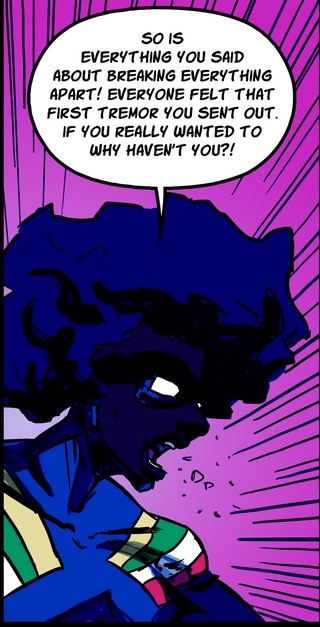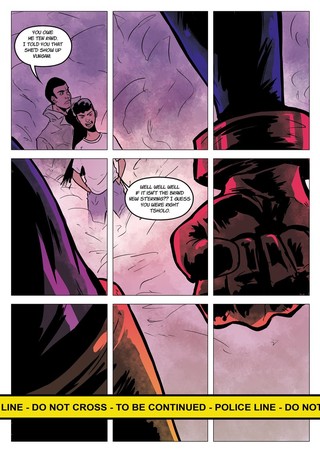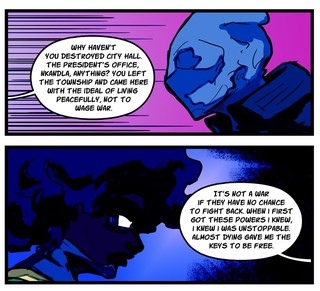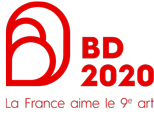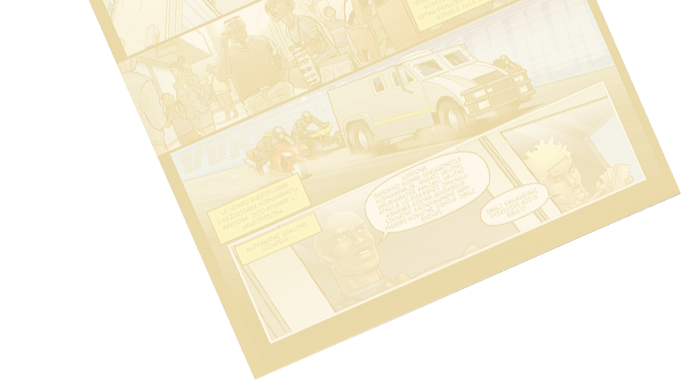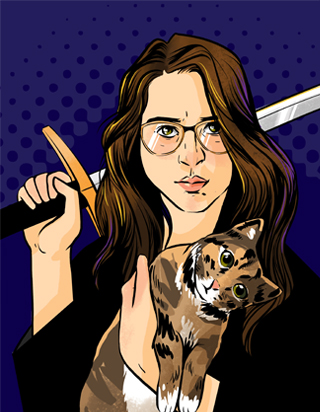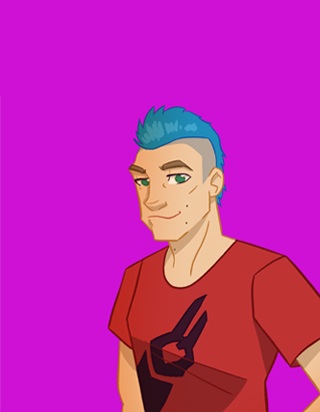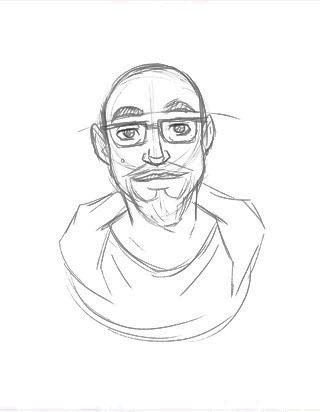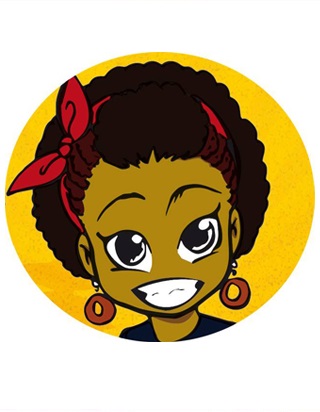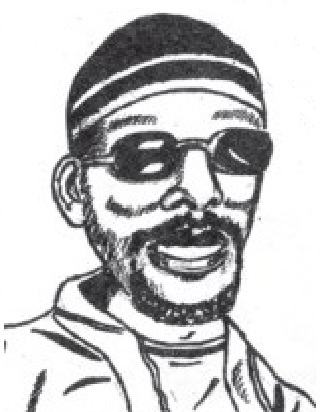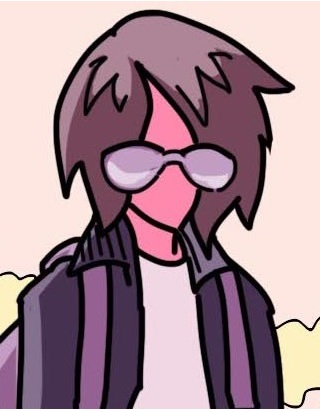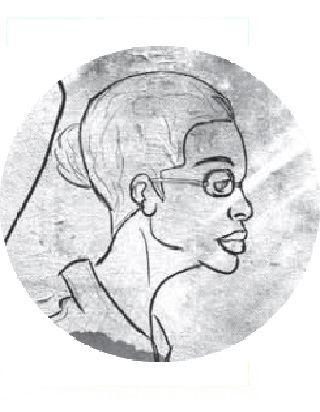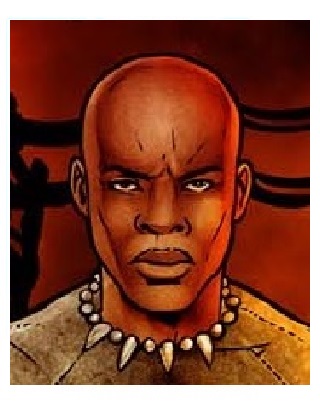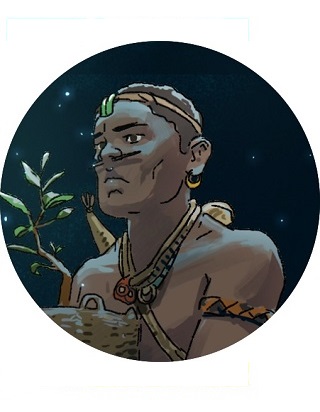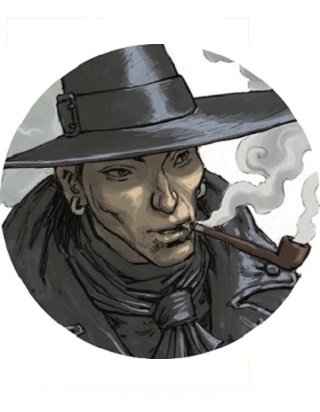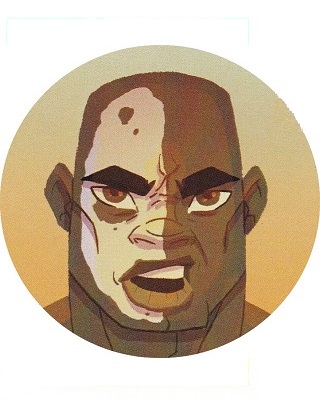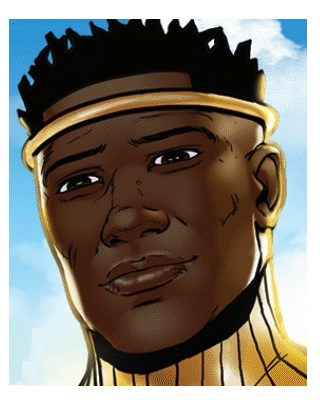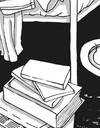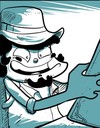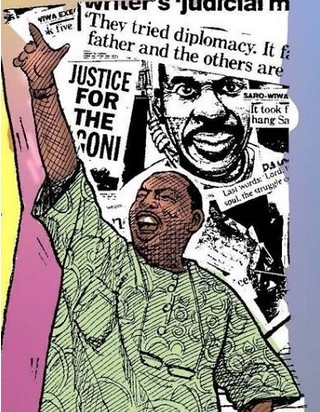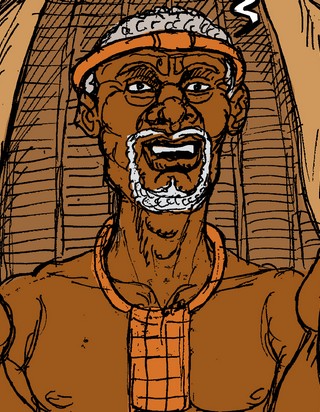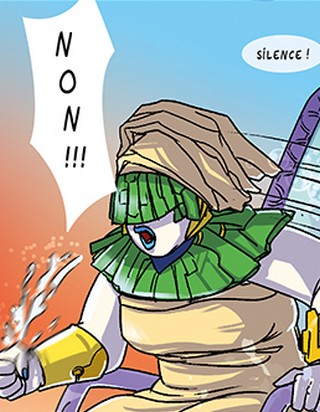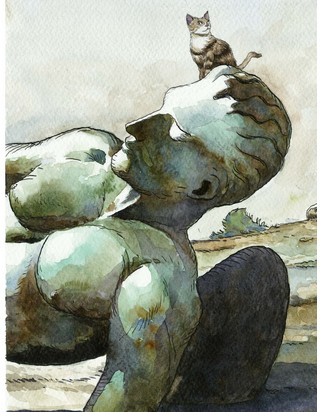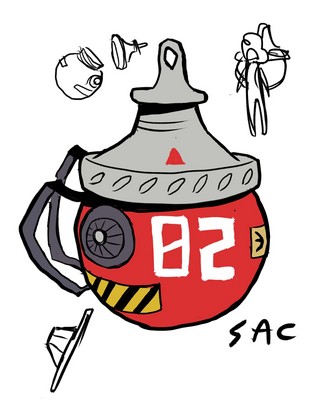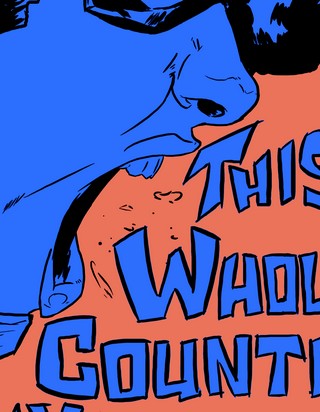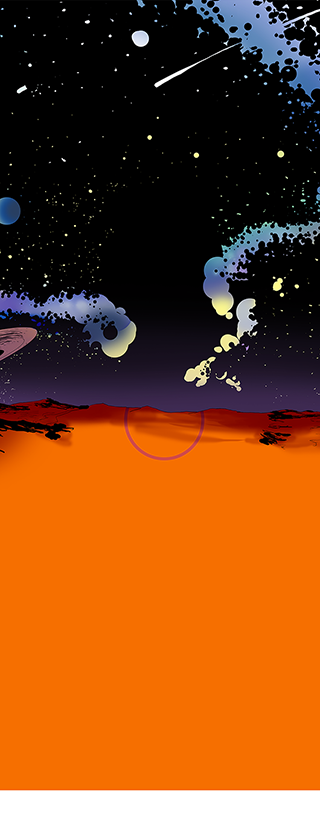
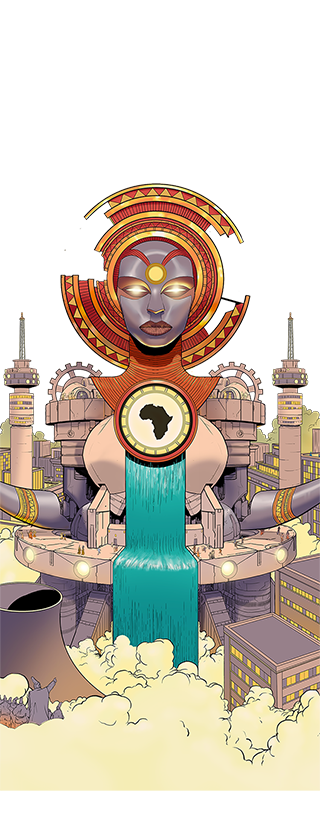
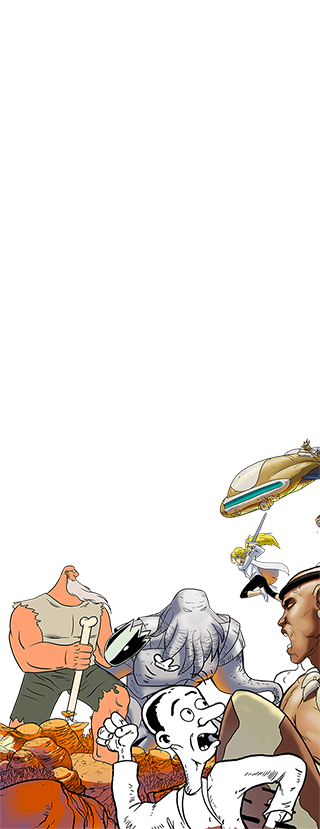

Scroll to discover
Afropolitan Comics
From South Africa to the Continent, Images in Conversation
Welcome to a world of fact and fiction, a world that speaks in images and words as equal partners and tells us tales of life, of power, of struggle, of friendship and of worlds both familiar and not.
Here you will experience tales from across Africa as the artists and writers construct new narratives in one of the oldest forms of expression.
We, as the curatorial team, hope that you will be moved by what you see, as comics are often an unseen art on the Continent. Designed as a bipartisan display, you will experience the works previously displayed at the South African Art of Comics exhibition at the Johannesburg Art Gallery, in conversation with their pan-African equivalents in what we hope will offer a true glimpse of the Afropolitan - a spirit of African invigoration shared by our continent, our home.
Scroll to discover
Chapter 1
Autobiography
Comics and graphic novels are an important new format for autobiographical literature, and the most natural form for comics authors to document personal histories and experiences. They allow for greater expression and experimental storytelling, where these different storytelling strategies allow us to feel closer to the author and their personal journeys. We can imagine pulling up a chair to listen to them talk or daydreaming ourselves into a world where we too could share our world with beloved superheroes. Here we can observe that no matter where we live, our stories of self-discovery and personal expression are universal and that the format of the comic allows us a creative space to express who we are.
South Africa
Click Tap to switch
The Continent
In The Initiation, Mogorosi Motshumi reflects on his childhood days, building up to his years as a Black Consciousness activist in the aftermath of the Soweto uprising and his move to Johannesburg where he had his heyday as the author of the popular Sloppy comic strip during the 1980’s.
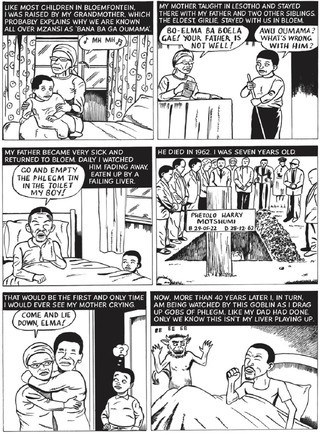
The novel takes us through divorce, addiction, family tragedy, and HIV/AIDS. Motshumi’s novel - permeated by the shadow of the Apartheid regime as seen through the eyes of a child, and then an increasingly politically aware teenager - is a classic South African story. It is also a rich and personal account of universal childhood joys and challenges, from hunting lizards, fording rivers and negotiating new schoolmates. It is the first part of the trilogy to be published with two volumes to follow.
I saw that I could express myself through this medium. As a child, I was not very talkative, but the paper became a conduit to express my feelings.


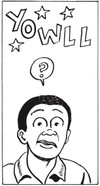
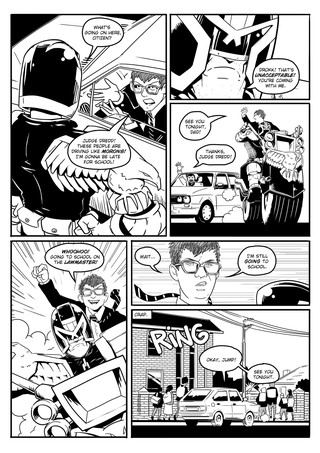
Mengelmoes, (roughly translated as ‘hodgepodge’ or ‘mishmash’ in English) explores Samuel’s teenage and boyhood days, as a young white Afrikaaner in post 1994 high school. The title is a reference to his experience of the country after the first democratic election, when the political situation was in a state of flux. His panels are a mixture between reality and fiction, reflecting his tendency for daydreaming and richly imaginative life. Figures from films and comics frequently appear in mundane situations, such as Judge Dredd and Star Wars characters, and scenes from Samuel’s life often manifest as ‘out-takes’, replicating the way our minds drift to different potential outcomes of a situation.
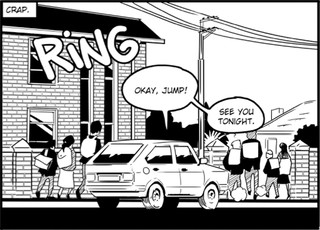
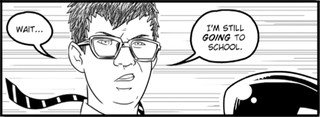
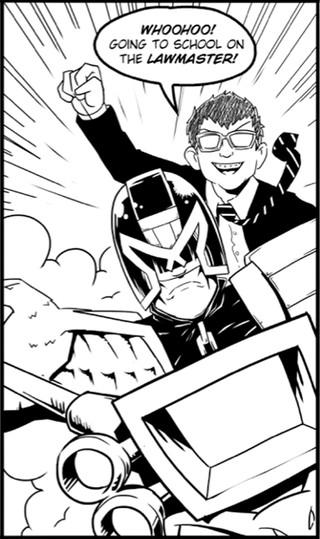
You’re in society and you create art in response to things you see around you
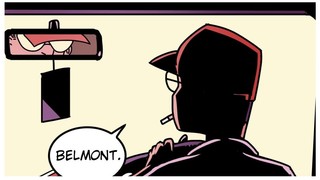
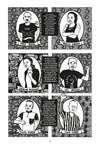
Lucha, Chronique d’une révolution sans armes au Congo is the story of the movement of the same name, created by young Congolese from all walks of life who have chosen to fight a peaceful struggle in a country where things are often settled by the use of weapons, clientelism or corruption. This citizen movement was born in January 2012 in Goma, in the east of the Democratic Republic of Congo (Kivu).
written by Justine Brabant, illustrated by Annick Kamgang
Motivated by the desire for a new, truly independent and democratic country, La Lucha campaigns through non-violent actions for access to water, education, an end to impunity for armed groups and the holding of presidential elections. This very popular movement is regularly repressed by the authorities.
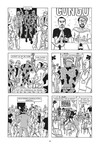


I love incisive, trenchant and topical drawings
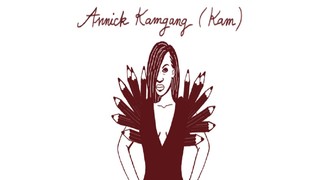
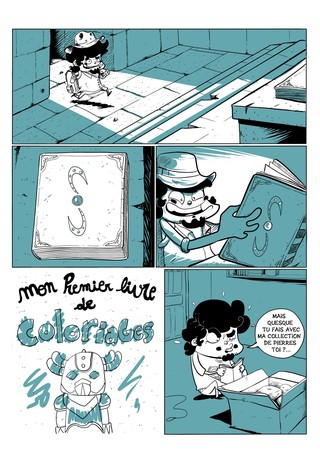
Nostalgeek follows the adventures of Togui, a 37 year old Algerian; clumsy, goofy, an avid lover of cinema, TV series, comics, food, and rock music (Dire Straits in particular). The author takes us on a journey of adventures, anecdotes and memories from the 1980s to the present day, following in the footsteps of a young dreamer during what has been called the "black decade" in Algeria (1990-2000), those years during which the Algerian government established an authoritarian regime under the pretext of curbing the rise of radical Islam. The socio-political criticism that punctuates this juvenilization narrative is marked by much self-mockery and sprinkled with geek references that Togui is particularly fond of.
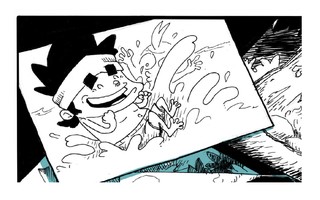
Comics are literary style in their own right. It's not just for kids, it's not inferior literature.
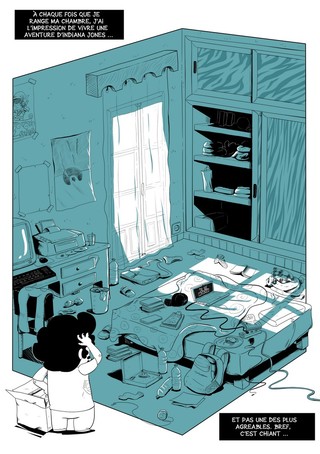
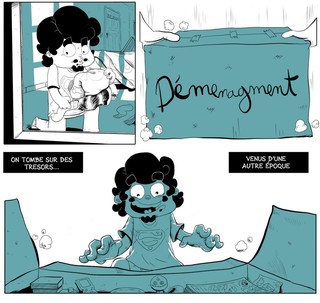
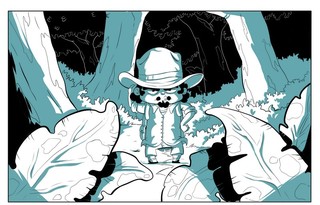
Chapter 2
Heroes and History
Comics aren’t always just about the fabulous world of superheroes. Their narratives can also recount the stories of real-life heroes whose actions and sacrifices have changed the world. Termed Biographical Comics, facts around historical figures are assembled along with comic visuals to tell the reader about and show the actions performed by these people during their lives. Subjects ranging from famous political figures, sports stars and celebrated musicians have all appeared in the pages of comics about their lives and achievements.
South Africa
Click Tap to switch
The Continent
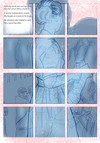
Basadi-Sadi is the work of Wits Digital Arts Master’s student Lesego Ditlhake. The project is as a unique combination of comic pages, factual information and poetry, celebrating the lives of some of the most important female figures of the Apartheid struggle, including Phyllis Ntantala-Jordan, Ruth First and Miriam Makeba.
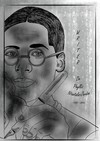


Interspersed with prose written by Ditlhake, the comic is formatted in different art styles that are crafted individually for each of the eight chosen women, weaving a beautiful visual tribute to truly remarkable people. Biographic comics fall in a unique space of providing education as well as entertainment, enabling them to reach a much larger audience than a standard textbook.
We don’t take her words for granted, they squeeze and struggle through the crevices and shadows of a brutal past and present. An Apartheid framework.
Shaka Rising: A Legend of the Warrior Prince, written and illustrated by Luke Molver, is the first of a series of comics from Story Press Africa that explore African history. Stories of Shaka’s life weave fact and fiction, often passed down through oral storytelling traditions, and biased accounts from Shaka’s rivals and white settlers have further shrouded his true history. Molver carefully researched and drew from both oral history and written historical accounts, emphasising that this story too, is just one interpretation. His striking art style and evocative colouring drives the narrative, and the educational sections of the book provide an enhanced experience around engaging with such an important South African story. The second book, King Shaka: Zulu Prince, was published last year.
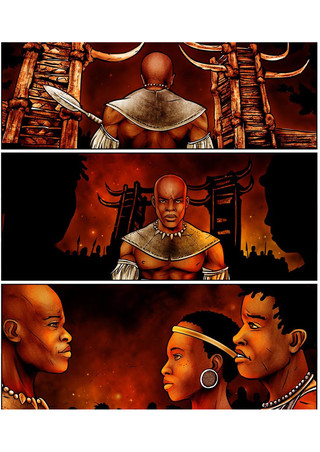
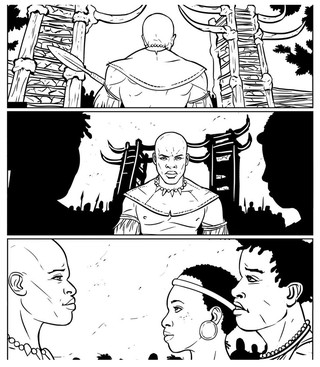
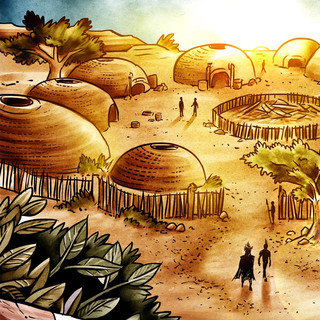
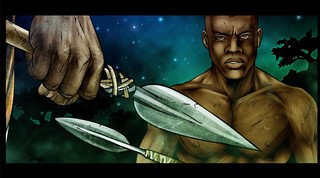
I refer to the old adage, "A picture speaks a thousand words…" and if you put pictures and words together, you’ve got the best of all worlds...
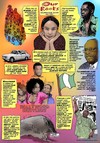
This is a historic journey which originally began as a school project whilst Tayo was a student at The Kubert School in New Jersey, US. There, he first created the series which he initially titled African Sketchbook. Our roots chronicles many prominent black historical figures, events, and customs.
Topics and people featured are Malcom X, tribal marks, black people in Nazi Germany, and many other times, people, and places through history, as related to the development of current black culture.
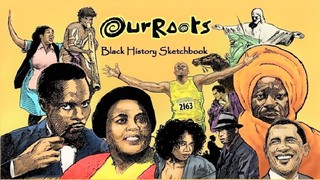
Africans are good storytellers and should be able to tell Africa’s various stories and history through visual communication.
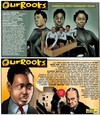
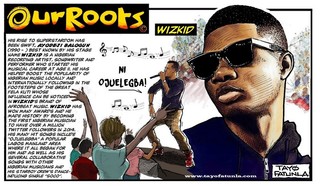

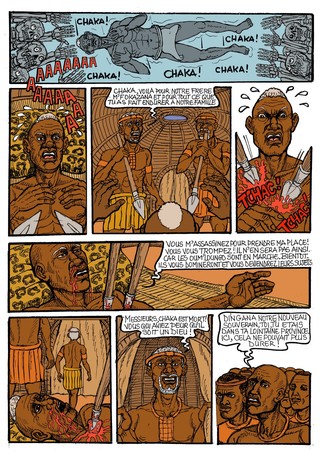
Unable to obtain a male child to succeed him from one of his four wives, Senza'ngakona, the chief of a small tribe in 18th Century South Africa fell in love with a young woman. From this unconsecrated union a boy named Chaka will be born. A child of adultery, a child of sin, Chaka is rejected by his family. Forced to flee, he embarks on a long wandering that will bring him to fulfil an extraordinary destiny.
Somewhere between historical narrative and legend, Chaka is inspired by the best known novel of the Sotho-language writer Thomas Mofolo, who recounted in the form of an epic the destiny of Chaka, better know as Shaka, the founder of the Zulu Empire. A story full of magic, madness and blood.
written by Jean-François Chanson and illustrated by Koffi Roger N'guessan
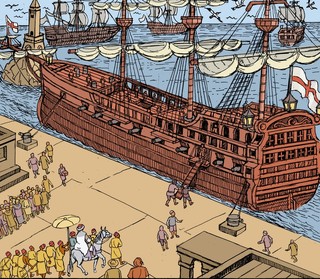
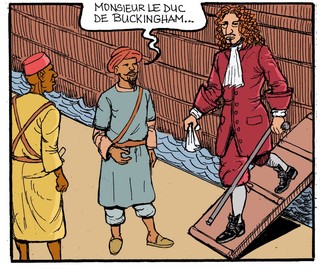
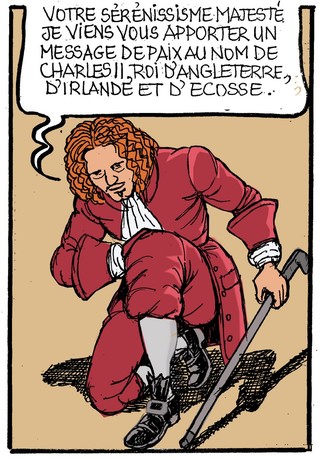
At the end of each book, there is always the desire to do better, (...) to always do a little bit more than in the previous ones. The feeling of going further, of taking on the challenges I set for myself in order to always live up to the readers' expectations.
Chapter 3
Folklore & The Future
A long time ago, when the world was still a little bit strange the African continent was regaled with tales of wickedly impish tokoloshe, the ferocious Nyami-Nyami and the trickster god Anansi. These fabled creatures stood as guardians of precious resources; they served as cautions against lapses in morality; or even how animals took the forms that we know today.
With this in mind, it should come as no surprise that African Folklore continues to inspire the comics of our continent, with some faithfully retelling the legends and others modernising them and combining them into speculative worlds much like our own; but populated by amazing creatures and colours.
South Africa
Click Tap to switch
The Continent
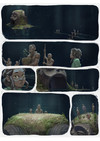
Kariba, by Daniel and James Clarke, tells the story of the construction of one of Africa’s largest dams, Kariba. The real world construction was rumoured to be plagued by Zimbabwean river god, Nyami-Nyami, inspiring the graphic novel’s storyline which follows characters Siku and Amadeo - the daughter of Nyami-Nyami and the son of the dam’s engineer, respectively. Siku is unaware of her heritage, but as she develops powers the mystery of her origins begin to unravel. Kariba is unique in that it has a shared heritage in both comics and animation, starting originally as a pitch for a feature-length film, then moving over to its comics form to raise funds for the cinematic project.
Illustrated and Conceptualised by Daniel Clarke, Written by James Clarke
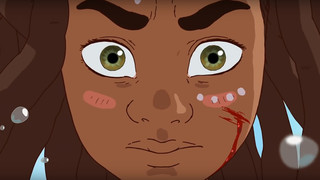
We don’t believe that children need things to be so explicitly spelled out for them or that they can’t deal with a certain level of complexity or ambiguity.
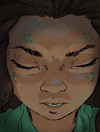


The Souvenir, by Daniël Hugo and Jayson Geland also draws on mythology as a source of inspiration. The story takes place on Table Mountain where, according to legend, Van Hunks and the Devil had a pipe-smoking competition resulting in clouds pouring over the mountain. The Souvenir plays with this piece of local folklore, and is the prologue for the series Unchartered Waters, published in South African comics anthology SECTOR. The understated tones of the colours are wonderfully complemented by Hugo’s incredibly detailed art - his sprawling landscapes are both expansive, yet strangely intimate, allowing for the reader to truly immerse themselves in the incredible landscapes of the earliest days of the Cape.
Illustrated by Daniël Hugo,
Written by Jayson Geland
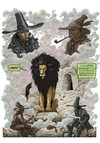
One is able to tell very personal stories visually without constraints like budgets or clients; you are only limited by your imagination and the ability to tell a story with pictures and words.
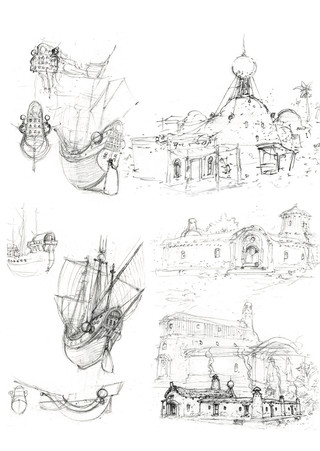
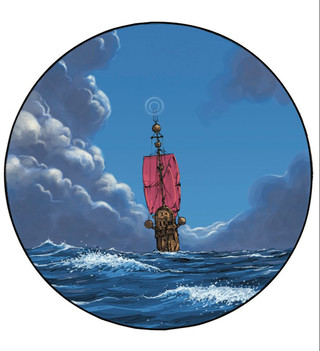
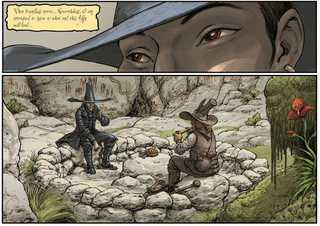
Wanton, by Ray Whitcher, inspired by South African myths and a certain daily newspaper, follows the journey of four people dealing with a country ravaged by war and overwhelmed by the sudden uprising of creatures once thought to be myth. The first issue sees a pair of inyanga (traditional spiritualists) set to battle an inumerable horde of tokoloshe (wicked imps inclined to kidnap and murder) as an ominous figure looks on.
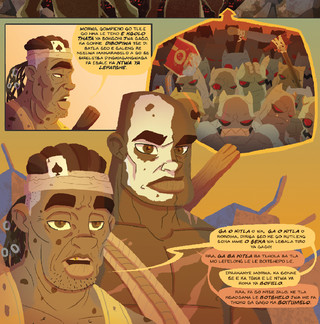
As the series progresses, more of the dark and mysterious speculative universe will be revealed, a universe filled with ruthless monsters, dangerous mercenaries and story lines directly drawn from tabloid publications. The second issue will be released in the second half of 2020.
I want my readers to hear my comics in their own voices when they read them and feel at home with the characters they see.
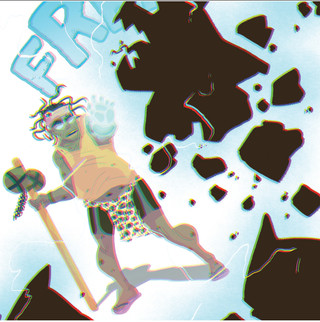
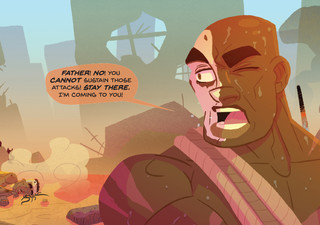
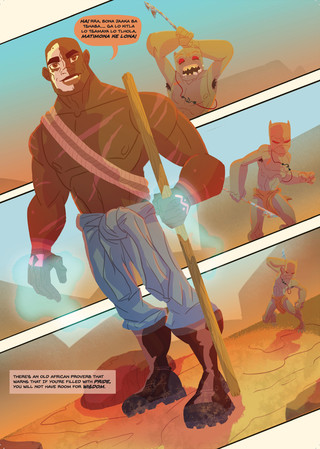
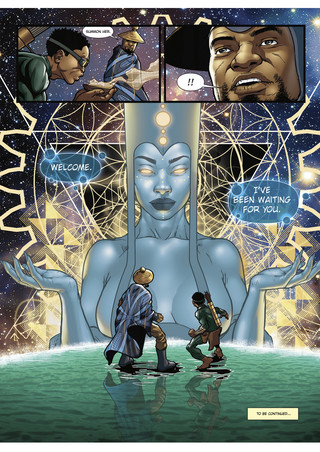
Kwezi, which debuted in 2011, follows the adventures of the eponymous character as he navigates the development of his superpowers in fictional Gold City (a hybrid of Johannesburg and Cape Town). In an arguably realistic representation, the hero starts out as an arrogant social media influencer, using his powers to attract attention rather than for altruistic ends. He ultimately becomes the hero he is meant to be by embracing his legacy and his new teammates.
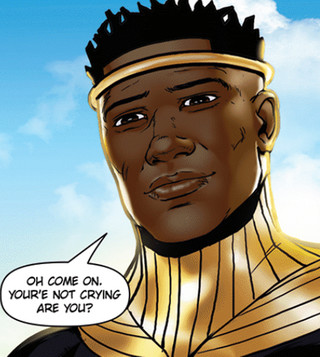
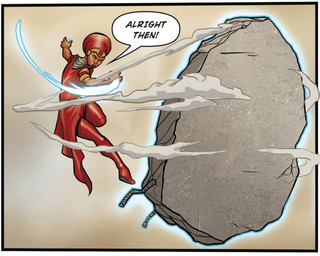

Kwezi explores themes of power, dignity, African heritage and modernity in its story and has the privilege of being touted as possibly the first truly official South African superhero comic. Kwezi has been translated into several languages, including Swahili and Phedi.
Illustrated by Loyiso Mkize, Coloured by Clyde Beech and Written by Mohale Mashigo.
Story Development by Loyiso Mkize, Clyde Beech and Mohale Mashigo
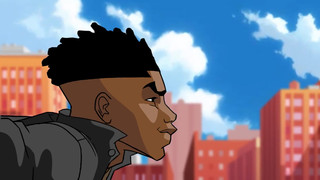
I address themes of time, power, society, culture, social terrain and the dynamic results that develop
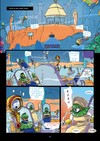
Mulatako, name meaning ''union'' in the Duala and Malimba languages of Cameroon, is a sci-fi comic book inspired by the local version of the Mami-Wata myth. Known in African and Afro-descendant cultures as the mother of waters, half-woman, half-snake, in the Cameroonian coastline, the mami-wata or miengu are humanoid water spirits, with their feet turned upside down. The heroine of the comic book, Jéméa is a 10-year-old Mami Wata, enrolled in the initiation camp for young miengu of the Pamba. She is not a very assiduous student and is forced to repeat the year. At the same time, in the depths of the sea, a lively discussion breaks out among the members of the Assembly of the Miengu chiefs. During this discussion, a terrible decision is taken: to exterminate part of the population.
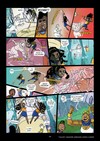


Educate yourself well and don't be afraid to return to training, take every opportunity to do so (masterclasses, free and paid online training, and so on), and know how to recognize opportunities.
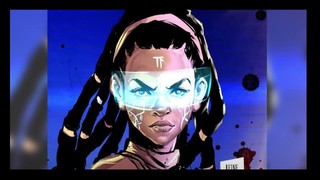
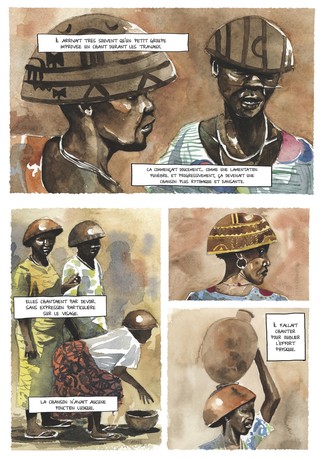
Culturally, I wasn't taught to love my own country, Cameroon. I was taught to love France.
In the popular New Bell district of Douala, the unemployed kids dream of Europe. Like so many young people his age, 17-year-old Malik lets himself be dragged along on this risky journey. From Cameroon to Lampedusa, via the Libyan coast, one dramatic event follows another, until one day Malik is taken in by a humanitarian association. But when nostalgia for his homeland overcomes him, Malik wonders if he made the right choice. Will he be happy in Europe, which has suddenly become less welcoming? This Voyage sans retour (Journey of no return) is a very beautiful album, as much for its graphics (the author having drawn it entirely in watercolours with a remarkable result), as for its story. It is presented as a docu-drama, where the author was somewhat inspired by his own experience.
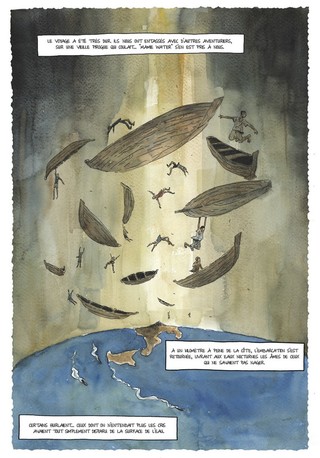
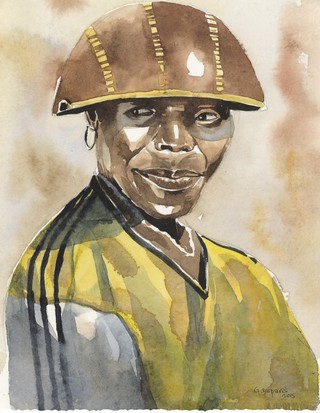
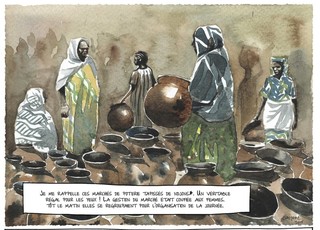
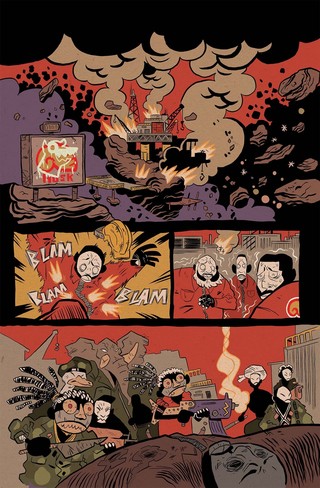
Years ago, the wizard Soumaoro broke the world before retreating to his magical tower. The people now live in fear of the almighty tower, and may be in need of a saviour. At least so thinks Awa, counselor to Prince Mansour Keita, as she tries to raise him to be the king the world may need. But perhaps the solution lies in her qualities more than his. As they enter the evil tower, mysteries are unravelled and a coming of age story unfolds as we follow their adventures inspired by folklores and aesthetics from West Africa.
Juni Ba dives into the rich folklore, mythology, and history of his heritage, mixing it with 21st century pop culture aesthetics, and a unique and energetic animated art style inspired as much by manga or Jack Kirby as it is by classic African art.
Juni Ba dives into the rich folklore, mythology, and history of his heritage, mixing it with 21st century pop culture aesthetics, and a unique and energetic animated art style inspired as much by manga or Jack Kirby as it is by classic African art.
When I pitched a “fantasy-sci-fi-funky" comic using West African influences, and published in a format of animated web comic, my teachers sort of flipped.
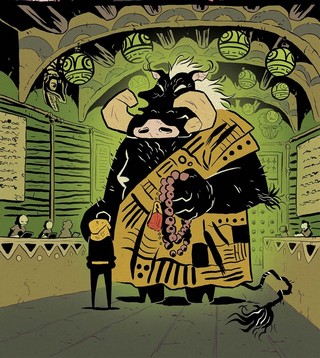
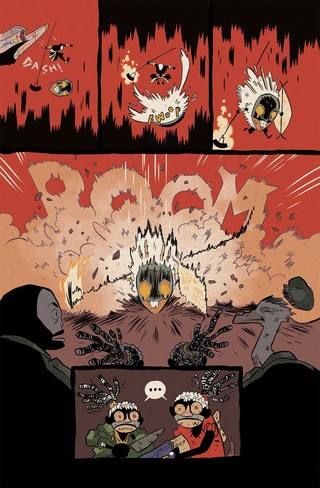
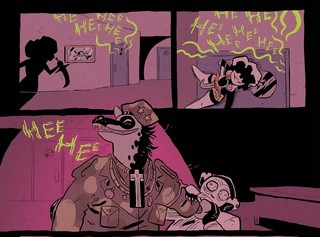
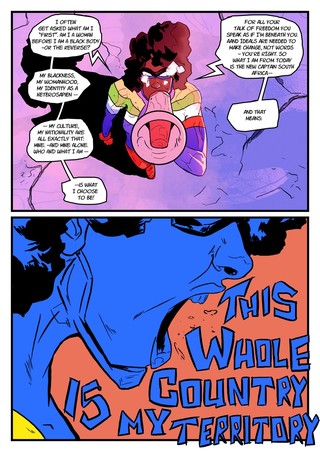
Inspired by all the politics and social changes that happen in South Africa, the character of Captain South Africa was inspired by all the inspirational women that Bill Masuku attended university with. The very first Captain South Africa was the pinnacle of superheroism in the country. He was a police officer that stepped up to take down crime to a record low and became the dam wall that kept evil at bay. He suddenly vanished forever and just like that, crime and villainy flooded the streets. Three years later a new Captain South Africa made her debut. A Black female superhero who "doesn't want to punch criminals because that doesn't end crime” and speaks of putting an end to all crime, not just saving the day, but saving the future. Made in the aesthetic tradition of American comic books, Captain South Africa, is an original deconstruction and reinvention of the super-hero genre.
I have chosen these areas because I have been in love with comic books, cartoons, anime, manga, and gaming since my youth. They are part and parcel of my identity, and wholly fuel my passion with each project I endeavour.
